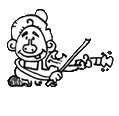1.2 Lingering with Fingering
In the video above, I explain what you’ll be learning on the fiddle and how to navigate this page. To learn more, take the Fiddlehed Site Tour.
Here’s what you’ll do in this module
Four new tunes:
- Freres Jacques
- Fais Do Do
- When The Saints Go Marching In
- Hoedown version of Mary Had A Little Lamb
Playing better in tune with tools like drones, electronic tuners and finger tape
Learn to read fiddle tabs
More precise and relaxed left-hand fingering with “Little Lift” practice
Training your ear with the Call-and-response game
Fun and productive practice with drones
Module 1.2 Progress
Core lessons started in Module 1.2:
Core Lessons
Week 1
- Technique: Drone tuning the notes on the D string
- Video Capsule Tune*: Freres Jacques
- Technique: How to Read FiddleHed Tabs
- Practice: Call-and-response Exercises 1.2
*Make a video of this tune or another core tune after you learn it. Make a second video 2-3 weeks later to see how it’s improved and what still needs work. Share your progress with the FiddleHed community by posting to the Student Video Exchange.
Week 2
- Tune: Fais Do Do
- Technique: Little Lift
- Technique: How To Play Better In Tune With An Electronic Tuner
- Tune: When the Saints Go Marching In
Week 3
- Technique: How to Place Finger Tape
- Tune: Mary Had A Little Lamb – Hoedown Variation I
- Practice: The Ultimate Beginner Pitfall
- Review Set 1.2
Practice Tips
Consistent Practice 📈
After establishing a daily habit of two minutes a day, transition to playing six days a week for at least twenty minutes a day.
Fiddling With Micro-motions

Focus on practicing and refining different motions. Become deeply aware of these motions by fiddling with micro-motions, and you’ll find a sense of physical pleasure in your practice.
Learn more here: Fiddling With Micro-motions
Make you practice fun and productive by using the D Drone. This helps you to play in tune and to play with a relaxed feeling.
Don’t be intimidated by how much there is to learn
Focus on doing one thing well. Do this for even just five minutes and you’ll see results. Each moment of quality practice is a huge success.
Bonus Lessons & Practice
Don’t feel obligated to do these bonus lessons. The tunes complement the core lessons above, so they are a good way to supplement your learning. But it’s more important to do one thing well than lots of mediocre things.
Bonus tunes
Supplemental lessons
- One Tune, One Scale, Ten Minutes
- D1 (E) tuning exercises
- D2 (F#) tuning exercises
- D3 (G) tuning exercises
- I Just Can’t To Make It Sound Good Today!
- Using Drones to Create Epic Practice Sessions
Workshops
When The Saints Go Marching In Workshop
Note-Reading Lessons
Note-reading is not absolutely essential, so these lessons are optional. But if you are interested in learning to read, I will teach it to you in a step-by-step manner as you work through the main course. You can also learn this later on in the Note-Reading For Fiddlers course.
Student Story
STUDENT STORY: JAMES
One day James was walking down the street with a friend when he saw a violin in a shop window and said “I’ve always wanted to play the fiddle.” That Christmas his friend gave him a fiddle (best gift ever).
James says:
Start here: Drone tuning the notes on the D string >>
